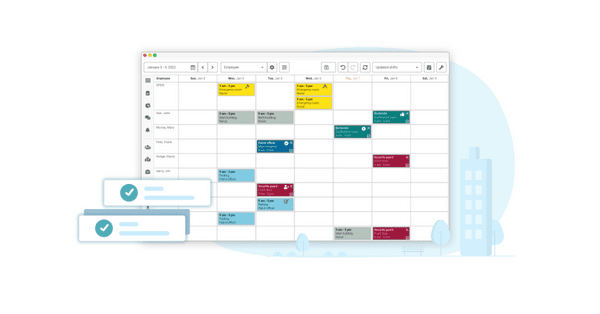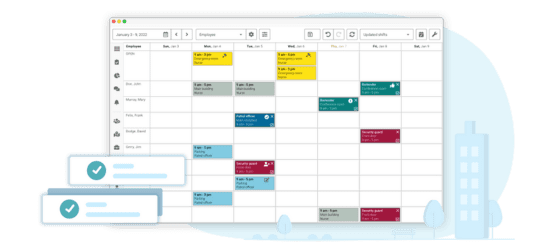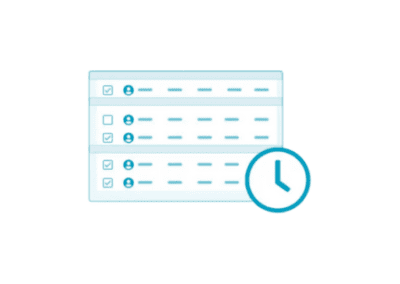In today’s competitive business environment, optimizing your workforce is key to staying ahead. One approach gaining traction among businesses of all sizes is demand-based scheduling. This is an innovative way to manage your resources in sync with your customer needs. This blog post will delve into the intricacies of demand-based scheduling, illustrating how it can serve as a robust tool to foster growth and prosperity.

What is Demand-Based Scheduling?
Demand-based scheduling is setting your workforce schedule according to different levels of demand. Whether that’s staff demand for certain shifts, peak/off-peak times or consumer demand. The key part of this type of workforce scheduling is the ability for companies to execute scheduling & data analytics concurrently. With employee scheduling software, the schedule can combine useful data and scheduling tools to accurately set schedules based on demand.
Factors that should be considered for Demand-Based Scheduling
Depending on your business or your industry, there are a range of things to consider when created a schedule based on demand. Below you will find 5 demand related factors that can accelerate the value and usefulness of demand-based scheduling.
Customer Traffic/Footfall
Customer footfall is the amount of customers that enter premises with the intent of making a purchase. The simplest example here is that of a retailer. Think of it in terms of leads from the perspective of a service provider. By using demand-based scheduling, a business can accommodate for trends in this demand. Whether they have high or low footfall, it can ensure there is enough staff present. Also, it helps management recognize gaps in their sales funnel, or pain points for customers.
“By counting footfall, retailers can identify at any time of day – how many purchasing opportunities they have in-store. Also, by incorporating that with sales data – how many they are missing.”
Footfall: How To Measure, Leverage, and Increase It (2022) – Shopify
When it comes to retail, events, hospitality and even security, there higher the footfall, the more shifts you need filled for that time period. Thankfully, there are often obvious periods of high footfall. Again, looking at retail as an example, weekends are far busier than weekdays in stores. For hospitality, footfall is quite seasonal – busier in the summer, school breaks, Christmas and other holidays. Understanding these patterns allows businesses to schedule staff and resources when they are needed most, based on demand.
Product demand fluctuations

When it comes to manufacturing or e-commerce businesses, employee scheduling is often driven by the demand fluctuations for specific products. Today, with social media and the idea of virality, demand can change overnight. With a huge increase in demand, managers need to be quick to adjust the employee schedule to meet demand. Unlike customer footfall, these fluctuations in demand can be harder to predict. With the right tools and resources though, schedulers can build their schedule based on forecasted demand. Sometimes, demand can fluctuate based on the seasons, holidays, and other factors.
Service demand
Demand also fluctuates for service-based businesses like call centres or hospitals. Naturally, the demand for these services can, and should heavily influence scheduling. Higher demand periods (such as a service issue for call centres or seasonal flus for hospitals) may require more staff. Lower demand periods then allow for reduced staffing or training. Being able to predict and manage this fluctuating service demand is key to using demand-based scheduling effectively.
Seasonality
A lot of businesses experience seasonality in their operations. Think of a retail store during the holiday season, or a ski resort during ski season. Seasonal demand has led to the idea of seasonal workers, which are a great tool for demand-based schedulers. With seasonal workers, schedulers need to know when the right time is to hire these seasonal workers, and when the right time is to let them go. Getting this wrong can lead to poor customer satisfaction, or unnecessary high labor costs.
Market trends
For most businesses, broader market trends directly impact demand. These trends include economic indicators, consumer behaviour changes, technological advancements or global events. In some cases, demand can drastically drop, or demand can rapidly increase depending on the trend. In order to be an effective demand-based scheduler, you have to keep your ear to the ground in order to see these things coming and adapt accordingly.
How Employee Scheduling Software assists in Demand-Based Scheduling

Employee Scheduling Software is one of the best tools you can use to use demand based scheduling effectively. Celayix has a range of features that are specifically developed to help you schedule your employees based on demand. These include schedule templates, labor forecasting, artificial intelligence, and simply just being able to view your own historical scheduling data.
Schedulers can look at a previous schedule from a known period of fluctuating demand to see what has worked previously. Or, they can just rely on our AI tools to do that for them! Schedule templates are great, because they allow schedulers to save an effective schedule from a period of high demand for re-use later. Labor forecasting is also a great tool that allows schedulers to forecast their demand and their labor to match.
Another great feature that helps with demand-based scheduling is the ability to change the schedule, and instantly alert employees if their shifts have changed. That way, if demand goes up/down drastically, schedulers can make last minute changes effectively.
If you’d like to learn more about how Celayix workforce management can help you get a grip on demand-based scheduling, check out a free live demo!





